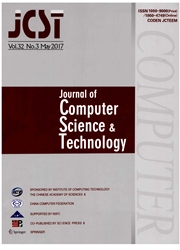

 中文摘要:
中文摘要:
最近,由于巨大的因特网图象,设备存储能力和传播带宽要求正在面对重担。通常,花费改进用户经验并且节省像一样可能,很多因特网应用程序总是集中于怎么完成适当图象压缩。在这份报纸,我们建议一个新奇框架高效地根据许多应用设定图象压缩。首先,我们评估输入图象的压缩水平并且预言离我们的系统用的最后的输出很靠近的起始的压缩水平一优先从巨大的图象学习了。然后,我们反复地重新压缩输入图象到不同层次和措施由基于块的编码质量的输入图象和新结果的感性的类似方法。根据优秀评价方法的输出,我们能更新目标压缩水平,或换到主观评估,或在我们的系统管道控制返回最后的压缩结果。我们基于不同应用程序组织主观评估并且获得相应评价报告。基于评价报告,最后,我们为设定图象压缩建立了一系列适当参数。而且,我们的新框架成功地被用于许多商业应用程序例如门户网站,电子商务,联机游戏等等。
 英文摘要:
英文摘要:
Recently, device storage capacity and transmission bandwidth requirements are facing a heavy burden on account of massive internet images. Generally, to improve user experience and save costs as much as possible, a lot of internet applications always focus on how to achieve appropriate image reeompression. In this paper, we propose a novel framework to efficiently customize image recompression according to a variety of applications. First of all, we evaluate the input image's compression level and predict an initial compression level which is very close to the final output of our system using a prior learnt from massive images. Then, we iteratively recompress the input image to different levels and measure the perceptual similarity between the input image and the new result by a block-based coding quality method. According to the output of the quality assessment method, we can update the target compression level, or switch to the subjective evaluation, or return the final recompression result in our system pipeline control. We organize subjective evaluations based on different applications and obtain corresponding assessment report. At last, based on the assessment report, we set up a series of appropriate parameters for customizing image recompression. Moreover, our new framework has been successfully applied to many commercial applications, such as web portals, e-commerce, online game, and so on.
 同期刊论文项目
同期刊论文项目
 同项目期刊论文
同项目期刊论文
 期刊信息
期刊信息
